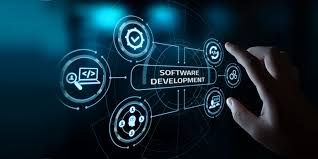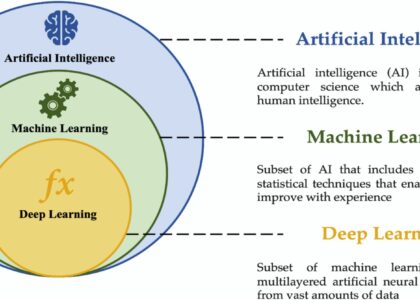The Power of Analytics Tools in Business
In today’s data-driven world, the use of analytics tools has become essential for businesses looking to gain valuable insights and make informed decisions. Analytics tools are software applications that help organisations collect, process, and analyse data to uncover patterns, trends, and correlations that can drive strategic actions.
Benefits of Analytics Tools
Analytics tools offer a wide range of benefits to businesses of all sizes across various industries:
- Data-driven decision-making: By using analytics tools, businesses can base their decisions on real-time data and insights rather than gut feelings or assumptions.
- Improved efficiency: Automation features in analytics tools streamline data processing tasks, saving time and reducing manual errors.
- Enhanced customer experience: By analysing customer data, businesses can tailor their products and services to meet customer needs more effectively.
- Risk mitigation: Analytics tools can help identify potential risks and opportunities early on, allowing businesses to proactively address them.
- Competitive advantage: Businesses that leverage analytics tools gain a competitive edge by making data-backed decisions that drive growth and innovation.
Types of Analytics Tools
There are several types of analytics tools available to businesses:
- Descriptive Analytics: Describes what has happened in the past based on historical data.
- Predictive Analytics: Predicts future outcomes based on historical data and statistical algorithms.
- Prescriptive Analytics: Recommends actions to take based on predictive analysis results to achieve specific outcomes.
- Diagnostic Analytics: Focuses on identifying why certain events occurred by analysing patterns and relationships in data.
In Conclusion
The use of analytics tools is no longer a luxury but a necessity for businesses looking to thrive in today’s competitive landscape. By harnessing the power of data through advanced analytics tools, organisations can unlock valuable insights that drive growth, improve operational efficiency, and enhance overall business performance.
Understanding Analytics Tools: Top Questions Answered
- What are the 5 data analytics?
- What are the role of analytics tools?
- What is an analytics tool?
- What is the best analytic tool?
- What are analytical tools example?
- Which tool is used in data analytics?
- What are the three analytical tools?
- What tools are used in data analysis?
- What are the 4 main types of data analytics?
What are the 5 data analytics?
Data analytics encompasses various methods and techniques used to analyse and interpret data to extract valuable insights and make informed decisions. The five main types of data analytics are descriptive analytics, diagnostic analytics, predictive analytics, prescriptive analytics, and cognitive analytics. Descriptive analytics focuses on summarising historical data to provide a clear picture of what has happened in the past. Diagnostic analytics delves deeper into data to identify the reasons behind certain outcomes or trends. Predictive analytics uses statistical algorithms to forecast future trends and outcomes based on historical data. Prescriptive analytics goes a step further by recommending specific actions to achieve desired outcomes based on predictive analysis results. Lastly, cognitive analytics involves leveraging artificial intelligence and machine learning technologies to simulate human thought processes and make data-driven decisions more efficiently. Each type of data analytics plays a crucial role in helping businesses gain insights, mitigate risks, and drive strategic actions for success in today’s data-driven world.
What are the role of analytics tools?
The role of analytics tools is crucial in modern business operations, as they play a fundamental role in transforming raw data into valuable insights that drive strategic decision-making. Analytics tools enable businesses to collect, process, and analyse vast amounts of data efficiently, helping them understand trends, patterns, and correlations within their operations. By providing actionable insights derived from data analysis, analytics tools empower organisations to make informed decisions, improve operational efficiency, enhance customer experiences, mitigate risks, and gain a competitive edge in today’s data-driven landscape.
What is an analytics tool?
An analytics tool is a software application designed to help businesses collect, process, and analyse data to extract meaningful insights and drive informed decision-making. By utilising various algorithms and statistical techniques, analytics tools enable organisations to uncover patterns, trends, and correlations within their data sets. These tools play a crucial role in transforming raw data into actionable information that can be used to improve operational efficiency, enhance customer experiences, mitigate risks, and gain a competitive edge in the market. In essence, an analytics tool empowers businesses to leverage the power of data for strategic planning and continuous improvement.
What is the best analytic tool?
When it comes to the frequently asked question of “What is the best analytic tool?”, the answer can vary depending on the specific needs and goals of each business. There is no one-size-fits-all solution, as different analytics tools offer unique features and capabilities that cater to diverse requirements. It is essential for businesses to evaluate their objectives, data sources, budget constraints, and technical expertise before selecting the most suitable analytic tool. Conducting thorough research, seeking recommendations from industry experts, and testing out different tools through trials can help businesses determine the best analytic tool that aligns with their strategic objectives and delivers optimal results.
What are analytical tools example?
Analytical tools encompass a wide range of software applications that help businesses extract insights from data to make informed decisions. Some common examples of analytical tools include Google Analytics, Microsoft Power BI, Tableau, and IBM SPSS. These tools enable users to collect, process, visualise, and interpret data to identify trends, patterns, and correlations that can drive strategic actions and improve business performance. By leveraging these analytical tools effectively, organisations can gain a competitive edge in today’s data-driven business environment.
Which tool is used in data analytics?
In the field of data analytics, there is a wide range of tools available to professionals for extracting insights from data. One commonly used tool in data analytics is “Python.” Python is a versatile programming language with robust libraries and frameworks that make it ideal for data manipulation, analysis, and visualisation. Its simplicity and readability have made it a popular choice among data analysts and scientists for tasks such as data cleaning, statistical analysis, machine learning, and more. Additionally, tools like R, SQL, Tableau, and Excel are also commonly used in data analytics to perform various tasks depending on the specific requirements of the analysis.
What are the three analytical tools?
When it comes to analytics tools, there are three primary types that businesses commonly utilise for data analysis and decision-making. These include descriptive analytics, which focuses on summarising historical data to provide insights into past events; predictive analytics, which uses statistical algorithms to forecast future trends and outcomes based on historical data patterns; and prescriptive analytics, which goes a step further by recommending specific actions that businesses can take to achieve desired results based on predictive analysis findings. Each of these analytical tools plays a crucial role in helping businesses extract valuable insights from data and make informed decisions for strategic planning and growth.
What tools are used in data analysis?
In data analysis, a variety of tools are commonly used to process and interpret data effectively. Some popular tools include statistical software like R and Python with libraries such as Pandas and NumPy, which are widely used for data manipulation and analysis. Business intelligence tools like Tableau and Power BI help visualise data in interactive dashboards for easy interpretation. Database management systems such as SQL Server and MySQL are essential for storing and retrieving large datasets efficiently. Furthermore, machine learning platforms like TensorFlow and scikit-learn enable advanced predictive analytics and modelling. These tools play a crucial role in assisting analysts in extracting valuable insights from complex datasets to support informed decision-making processes.
What are the 4 main types of data analytics?
In the realm of data analytics, the four main types of data analytics are descriptive analytics, predictive analytics, prescriptive analytics, and diagnostic analytics. Descriptive analytics focuses on summarising historical data to provide insights into what has happened in the past. Predictive analytics utilises statistical algorithms and historical data to forecast future outcomes. Prescriptive analytics goes a step further by recommending specific actions based on predictive analysis results to achieve desired goals. Diagnostic analytics delves into identifying the root causes of events by analysing patterns and relationships within the data. Each type plays a crucial role in helping businesses extract valuable insights and make informed decisions based on data-driven analysis.






